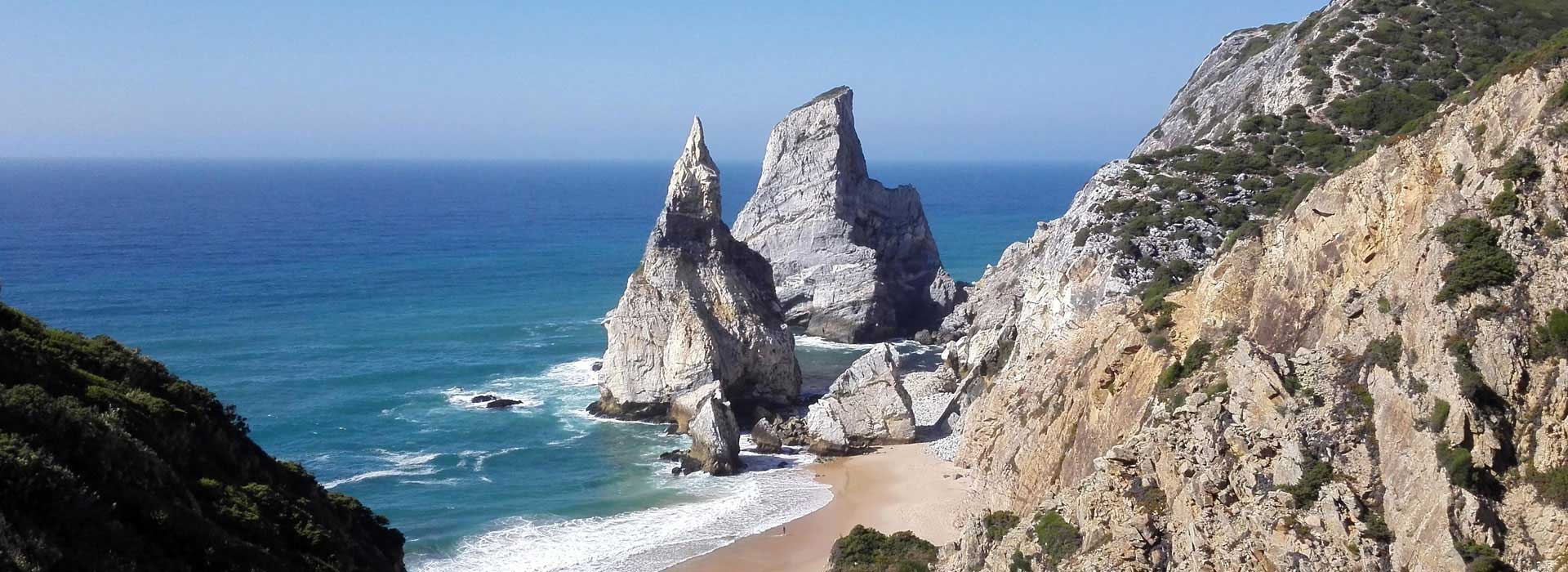
For those seeking solitude and serenity, Praia da Ursa emerges as an idyllic haven. Situated just north of Cabo da Rocha, the westernmost point of mainland Europe, this secluded sandy enclave boasts a rugged and untamed allure. Offshore, towering rock stacks and islets engage in a timeless battle with the crashing waves, capturing the attention of avid photographers. Notably, the beach derives its name from a prominent rock formation known as Rocha da Ursa, resembling a bear cradling its cub. Its pristine and unspoiled landscape owes much to its remote location. While access may pose a challenge for those with mobility constraints, the journey down the hill from the parking area, which can take up to an hour, promises adventurous souls a glimpse of one of Portugal's most breathtaking beaches.
The tale of Rocha da Ursa (Bear Rock) harkens back to the era of the last ice age, when snow blanketed the surrounding hills. According to legend, a mother bear and her cubs once roamed the beach during this frigid period. As the ancient gods forewarned the coastal creatures of the impending thaw and urged them to seek higher ground, the bear obstinately refused to heed their advice. Incensed by her defiance, the gods petrified the bear and her cubs in stone as punishment.
If you plan to explore this legendary site, sturdy footwear and perhaps hiking poles are advisable because of the rugged terrain. It's wise to pack a lunch, as there are no dining options nearby. The path, mainly a dirt track, can be steep and slippery, especially after rainfall. Swimming at the beach is discouraged due to the presence of hidden rocks and strong currents just offshore.
Parking is at Cabo da Rocha and the track leads off from there, follow the white, red, yellow trail signs.
|
From Cascais and Lisbon follows the N247 and turning off at Azóia and follow signs for 1.5 miles (2.5km) from there. From Sintra take the N247 East. | |
|
• 1253 – Sintra (Estação) via Cabo da Roca | Circular |